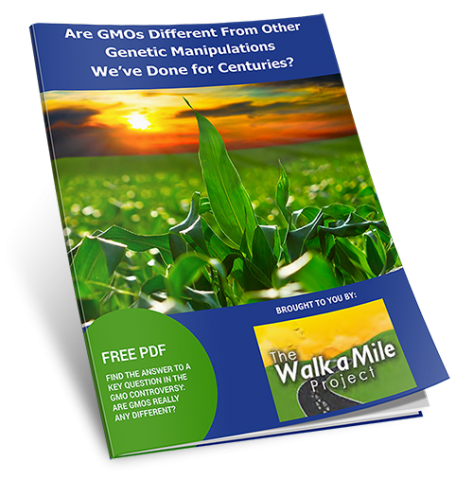Will Consumers Want the GMO Arctic Apple?
If you’re following the GMO situation, you’ve probably heard of the GMO Arctic Apple. It won approval in the U.S. and Canada this past spring, but won’t roll into supermarkets for a few years. The apple consists of two versions, Golden Delicious and Granny Smith.
The Golden Delicious labeled in the picture below is of the variety we’re used to, with a little browning here and there. The apples to the right, however, are the browning-free Arctic apples.

The Arctic Apple offers non-browning appeal. Original image here: http://www.buzzfeed.com/stephaniemlee/uncommon-core#.fyn9znKlGr
Let’s dig a little deeper into this GMO fruit. First of all, did you know the apple is a result of millions of dollars and two decades of labor? But what were the “fruits” of this labor?
Break apart its unremarkable surface to reveal its flesh, wait long enough, and you’ll see what’s different: It remains pure white. It doesn’t start to brown right after you take a bite and leave it on the kitchen counter. In fact, it doesn’t start to brown until it molds or rots. It doesn’t bruise, either. Through a feat of genetic engineering, Carter’s apples hold on indefinitely to the pearly-white insides that inspired their name — the Arctic.
But this begs the following questions: Don’t people want browning as a safeguard mechanism in their fruit? And what were the perceived benefits for eliminating browning?
In the U.S., Canada, Australia, and New Zealand, more fruits and vegetables are lost or wasted than consumed across the supply chain, according to the United Nations Food and Agriculture Organization. Apples, the second-most consumed fresh fruit in the U.S. behind bananas, make up a good chunk of the waste: an estimated 1.3 billion pounds every year, or a $1.4 billion loss, with a sizable yet unknown portion due to off-coloring or soft spots.
Sounds like an noble enough reason to eliminate browning, but the fact remains, the apple is genetically engineered using gene silencing — a different technique than most GMOs we usually find ourselves discussing. Livescience.com explains in detail the risks involved with gene silencing. Unlike earlier cut-and-splice techniques focused on DNA, the new techniques are based on the manipulation of RNA molecules.
There are other non-browning apples as well, such as the RubyFrost, the Eden, and the big golden Opal, which is not-so-subtly advertised as a “non-GMO apple” that “naturally doesn’t brown” — “the first U.S. apple variety to be verified by the Non-GMO Project.” Opals were created by crossing a Golden Delicious apple with a Topaz, and to those concerned with genetic engineering, these apples may sound like ideal alternatives.
Will consumers want the GMO Arctic apple when it’s available? Let us know what you think in the comments below.
To read this article in its entirety, go to http://www.buzzfeed.com/stephaniemlee/uncommon-core#.ryDP2pXbzw



